Eunjin Yu, EAAFP intern
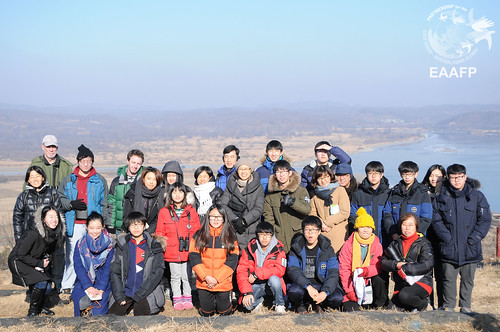
Group photo after White-naped Crane birdwatching near Imjin River, Republic of Korea ?EAAFP/Eunjin Yu
On January 9th 2016, together with EAAFP Secretariat, students from Incheon schools went on a crane birdwatching trip to Paju and Cheolwon, Republic of Korea. The trip began from Incheon to Paju Book City, Imjin River and Imjin-ri Heliport near Chopyeong Island in Paju City, and then continued to Togyo Reservoir and Hantan River in Cheolwon City.
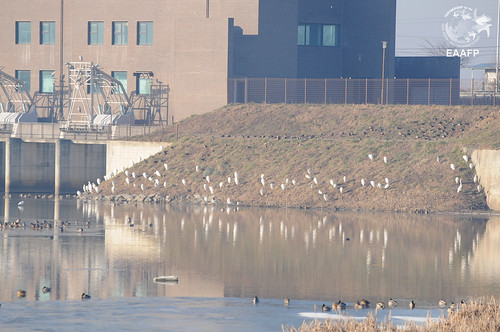
Mallards, Spot-billed Ducks, Bean Geese, Great Egrets and Eurasian Spoonbills in Paju City ?EAAFP/Eunjin Yu

Students, their parents and teachers and EAAFP staff looking through scopes and field guide books to identify birds ?EAAFP/Eunjin Yu
In Paju City, flocks of Mallards, Spot-billed Ducks, Bean Geese and Great Egrets along with 9 Eurasian Spoonbills were seen. The staff was told that due to cold weather there had been some juvenile Black-faced Spoonbills staying in the area, but none was seen on the day.

Black Vulture Aegypius monachus at Imjin-ri Heliport ?EAAFP/Eunjin Yu
A Black Vulture was flying over our head when we arrived at Imjin-ri Heliport. It was gliding on the wind with its massive wings stretched to each side showing off its predatory presence. In reality, however, the number of Black Vultures in the Republic of Korea is decreasing due to lack of food.
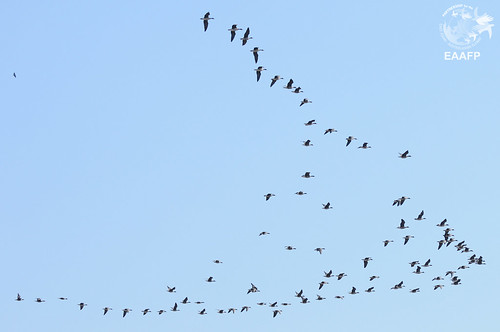
Flock of Bean Geese flying over Togyo Reservoir ?EAAFP/Eunjin Yu
On the way to Cheolwon City, a few White-naped Cranes were seen feeding in the rice paddies. Three Red-crowned Cranes were relaxing at Togyo Reservoir, which is a rare occasion according to a local guide. White-naped Cranes, Bean Geese, a Black Vulture and a Grey Heron were also seen at the reservoir.
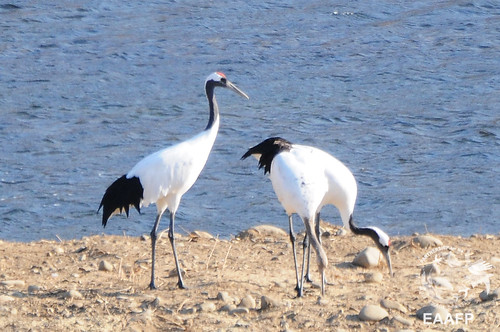
Two adults and a juvenile Red-crowned Cranes by Hantan River ?EAAFP/Eunjin Yu
Red-crowned Cranes, White-naped Cranes and Whooper Swans by Hantan River were either feeding or resting. An interesting thing about the place was that there was a bird hide with its one side open, looking over the river. This building was meant for birdwatchers to enjoy watching the birds but at the same time keeping some distance from their resting place. Despite the fact that the intention was good and bird-friendly, it has become an artificial feeding place just so people can take a better picture of birds.
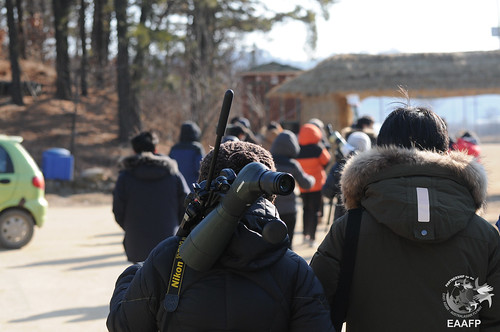
Students heading to next destination with scope on their shoulder ?EAAFP/Eunjin Yu
Some students have voluntarily established an in-school conservation group for migratory waterbirds. Seeing the sparkling eyes of students as they watch birds, we could feel their love for birds. We should try harder to conserve migratory waterbirds and their habitats so that our generation and next generation can still enjoy these beautiful migratory waterbirds as we do now.
To see more photos, visit our flickr album




